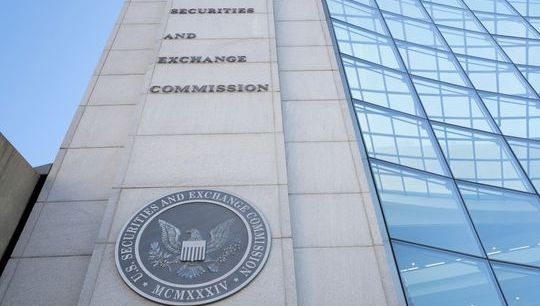Marketing sustainable investments in Europe and the UK: A path to clear blue water?
By Andrew Shrimpton; Rachel Aldridge; Sarmad Naim, IQ-EQ
Published: 19 June 2023
Keeping up with the rapid pace of regulatory change can be exhausting - but when it comes to sustainability disclosures and environmental, social and governance (ESG) - related compliance, fund managers would do well to pay attention.
For the first time since Brexit, UK-based fund managers have a strategic choice to make about the sustainability regimes they will participate in. Each option contains unique pros and cons, so managers must understand each regime well to extrapolate their long-term impact. In addition, non-UK based fund managers aiming to target UK investors may benefit from a high-level understanding of the regime being developed in the UK, as it may allow future-proofing of their offering and align their internal ESG / Sustainable Finance Disclosure Regulation (SFDR) compliance.
At present, there are two primary regimes for fund managers to grapple with: the UK Sustainability Disclosure Requirements (SDR), and the EU SFDR. Managers must understand the key practical differences between the two to make good decisions about how they market funds in the UK, the EU, or both.
SFDR and SDR: an overview
SFDR
The EU’s Sustainable Finance Disclosure Regulation (SFDR), introduced by the European Commission in 2018, outlines sustainability disclosure requirements for investment firms and managers. SFDR applies to entities established in the EU and products marketed in the EU, regardless of the marketing entity’s location.
SFDR aligns with the UN General Assembly’s 2030 Agenda for Sustainable Development, which includes a broad scope of still-developing ESG indicators and metrics, including the Sustainable Development Goals (SDGs). SFDR also introduces Principal Adverse Impacts (PAIs), which take into account the impact of respective firms on the wider society, even when those matters may not impact the investment value.
PAIs are also used for a ‘do no significant harm’ test for ‘sustainable’ investments, so that such investments do not cherry-pick certain sustainable objectives while causing societal harm. SFDR further offers the possibility of aligning products to a taxonomy, thus aiming to create another level of assurance for sustainability focused investors.
Large EU-based companies and all companies with securities listed in an EU-regulated market also fall within the scope of the Corporate Sustainability Reporting Directive (CSRD), a set of corporate sustainability reporting rules initially designed for large firms. Companies in scope of CSRD will soon be required to report on their sustainability-related impacts, risks and opportunities, including those represented by their value chain.
SFDR has been in effect since 10 March 2021, but with significant changes unfolding at the time of writing.
SDR
The UK’s Sustainability Disclosure Requirements (SDR), aims to provide investors with more accurate, consistent and easily comparable sustainability information and is currently in consultation with the Policy Statement due in the third quarter of 2023. It has as its starting point the recommendations of the international Task Force on Climate-Related Financial Disclosures (TCFD), a globally standardised framework focused solely on climate-related metrics.
However, SDR goes beyond climate and also embeds other ESG considerations. SDR does not contain a ‘do no significant harm’ test, which the FCA views as too restrictive, nor does it reference reporting of PAIs. SDR also does not include references to taxonomy alignment, though this will likely change when a UK taxonomy is developed.
SDR is expected to come into effect in Q3 2023, along with clarifications on greenwashing. Funds that make sustainability claims should review their marketing prior to Q3 and ensure that it is clear, fair and does not mislead investors.
Post-Brexit divergence
There’s no ‘chicken or egg’ about it - in the world of sustainability disclosures, SFDR came first, enabling the FCA to make deliberate policy decisions based on lessons learned from its rollout. SDR also received more industry-wide engagement than EU regulators had available before SFDR was rolled out. Because of that timeline, SDR enjoys some of the advantages of hindsight. On the other hand, significant uncertainties remain for the brand-new regime, such as a lack of clarity on whether non-UK funds will be within the scope of SDR.
In many ways, SFDR and SDR are each the inverse of the other. SFDR began as a disclosure regime that ultimately became known as a hierarchical labelling regime. UK regulators thus started SDR as a labelling regime, eliminating the hierarchy - but there’s a good chance that it will ultimately become a disclosure regime.
For the first time since Brexit, UK-based fund managers have a choice about the sustainability disclosure regulations they will adhere to. They have no obligation to comply with SFDR unless they are marketing funds to European investors under the National Private Placement Regime (NPPR). Managers who opt to market funds in the EU will need to adhere to the requirements of both jurisdictions.
Key differences between SFDR and SDR
At their core, SFDR and SDR are both designed to increase investor trust, combat greenwashing, increase transparency around sustainable finance, and empower investors to make better-informed decisions. However, the mechanisms they employ to achieve those ends differ in a few keyways.
SDR will employ three labels: focus, improvers, and impact. These labels do not correspond to the three categories in SFDR (Article 6, Article 8 and Article 9).
Through SDR, the FCA is working against “exaggerated, misleading or unsubstantiated claims” within sustainable investment products. Consumer-related disclosures are meant to help investors understand the key sustainability features of an investment product and compare different products to each other.
Importantly, SDR’s labels are not hierarchical. Instead, they are reflective of consumer preferences:
- Sustainable focus: Funds that mainly have an environmentally or socially sustainable focus. This label suggests a high standard of sustainability, particularly as it comes with a minimum threshold of sustainable assets (70%) in which the fund must invest
- Sustainable improvers: Funds that may not currently be sustainable but aim to make a positive environmental or social impact in future. This label highlights the concept of stewardship and making measurable improvements to underlying ESG performance
- Sustainable impact: Funds that invest in real-world problems and achieve measurable real-world contributions to ESG outcomes. There is no minimum sustainable investment required under this label, which includes products with a specific ESG outcome as an objective
SFDR classifies funds as Article 6, 8 or 9, depending on their characteristics. These categories are not labels as such, but instead represent the level of disclosures that the fund must make.
- Article 6: Funds without a sustainability scope
- Article 8: Funds that promote ESG characteristics
- Article 9: Funds with sustainable investment as their core objective
SFDR’s Article 8 category does not currently include minimum criteria for a percentage of assets with ESG characteristics, which at times may provide an easy ESG label for firms and could lead to greenwashing. Proposed changes to SFDR include stricter guidelines, such as minimum safeguards based on Paris-aligned benchmarks, an 80% investment threshold for funds with ESG and related terms in the name, and a 50% threshold for funds named with sustainability-related terms.
How should managers navigate?
The FCA has provided mapping to SFDR in a consultation paper, but mapping pathways are not always clear. A firm could offer an investment product that qualifies as Article 8 or 9 under SFDR but does not meet the qualifying criteria for investment labels under SDR, which may create market confusion.
Regardless of where UK-based managers intend to market, firms with green funds should undertake a structured greenwashing review of client communications to show regulators that they have acted with due care, skill and diligence under PRIN 2 of the FCA Handbook, identifying sustainability-related claims and controls in place to ensure consistency with the fund profile. This will prepare them for SDR and will help pave the way for SFDR disclosures, should funds choose to market to European investors.
On the whole, the post-Brexit landscape brings with it some strategic decision-making for managers of green funds. SFDR is the more onerous regime in terms of disclosures and compliance, but it also enables access to European investment capital. However, SDR is as yet untested, and time will tell whether it, too, has unforeseen consequences that require additional rulemaking. (The initial implementation has already been pushed back and the FCA are committed to a consultation on overseas funds.)
Wherever managers opt to market funds, one point is clear: sustainability remains a bright spot within a tumultuous global economy. Though sustainability regulations differ, fund capital is primed to support ESG initiatives throughout the UK and Europe.







